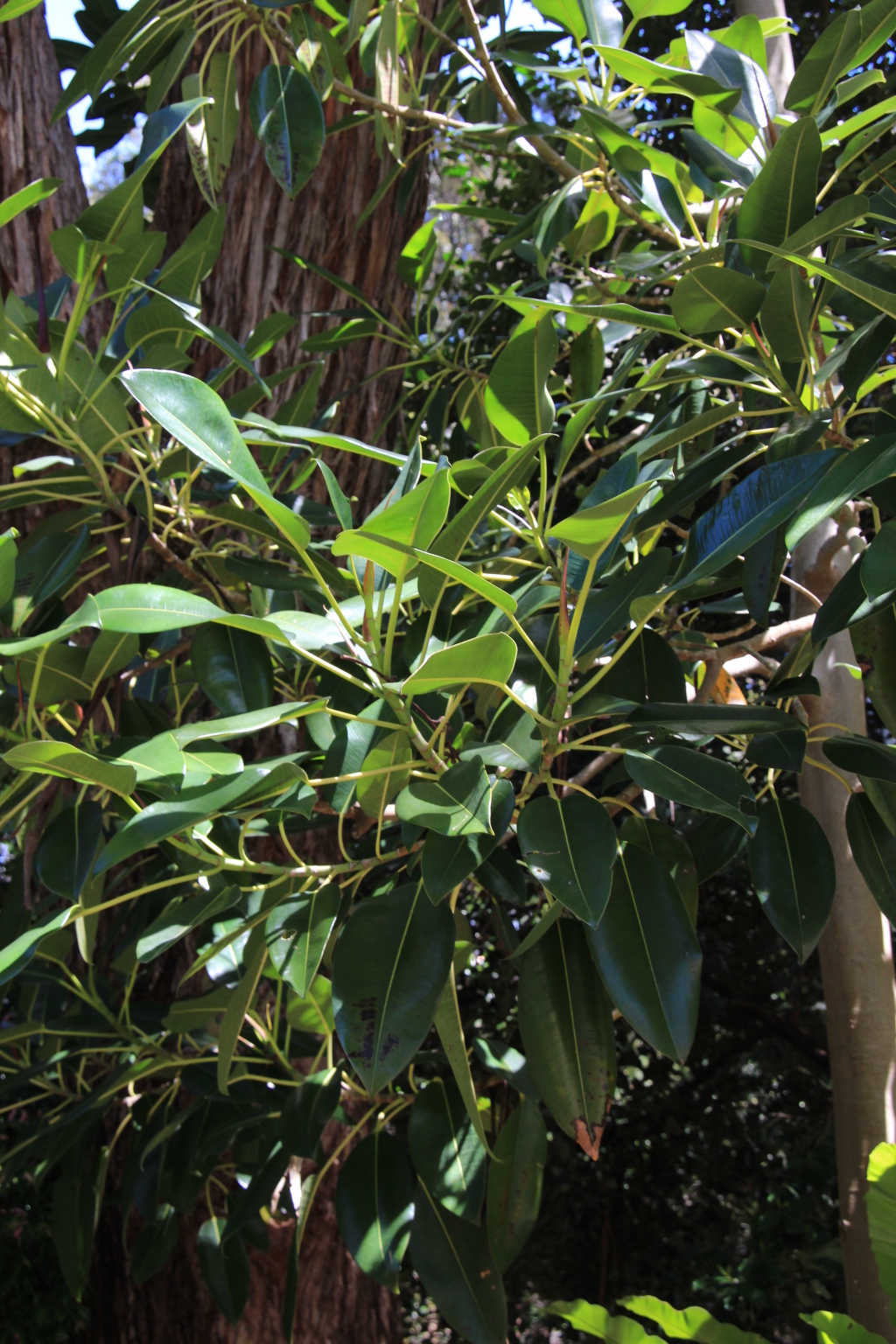Ficus macrophylla f. macrophylla
Tree to 55 m high with spreading crown, strongly buttressed, epiphytic in early stages. Leaves alternate, broadly elliptic to oblong; apex acute to acuminate; margin entire; base cuneate to obtuse; lamina 10–25 cm long, 7–12 cm wide, glabrous above, rusty ferruginous-pubescent beneath; petiole 5–10 cm long; stipules usually 3–10 cm long, finely pubescent. Figs axillary, solitary or in pairs, globose to oblong, c. 20–25 mm long, glabrous, purple when mature; osteole minute, hardly raised; basal bracts 2, early deciduous; lateral bracts absent. Flowers most of the year.
GipP. Occurs naturally from north-eastern Queensland to near Nowra in New South Wales, but was widely planted in the 1800's as an avenue or specimen tree in many Australian cities. In Melbourne, birds, possums and fruit-bats have distributed seed through suburban areas, resulting in small plants becoming established as epiphytes on e.g. palms (particularly the widely planted and occasionally naturalised Phoenix canariensis).
Two forms are recognised in this species. The form columnaris is restricted to Lord Howe Island and distinguished by its many column-forming roots.
 Spinning
Spinning

